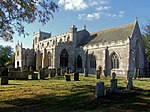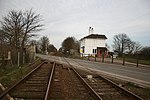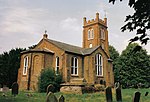Old Leake
Borough of BostonCivil parishes in LincolnshireUse British English from January 2014Villages in Lincolnshire

Old Leake is a village and civil parish in Lincolnshire, England. The population of the civil parish at the 2011 census was 2,022.Old Leake is situated approximately 8 miles (13 km) north-east from Boston, and on the A52 road between Leverton and Wrangle at the junction of the B1184 (from Sibsey). Areas included in the parish are The Gride to the north-west, Leake Commonside and Lade Bank to the north, and Leake Hurns End to the south-east. The coast of The Wash lies 3 miles (5 km) to the east of the village.
Excerpt from the Wikipedia article Old Leake (License: CC BY-SA 3.0, Authors, Images).Old Leake
Church Road,
Geographical coordinates (GPS) Address Nearby Places Show on map
Geographical coordinates (GPS)
| Latitude | Longitude |
|---|---|
| N 53.031924 ° | E 0.097341 ° |
Address
White Hart
Church Road 31
PE22 9NS , Old Leake CP
England, United Kingdom
Open on Google Maps









